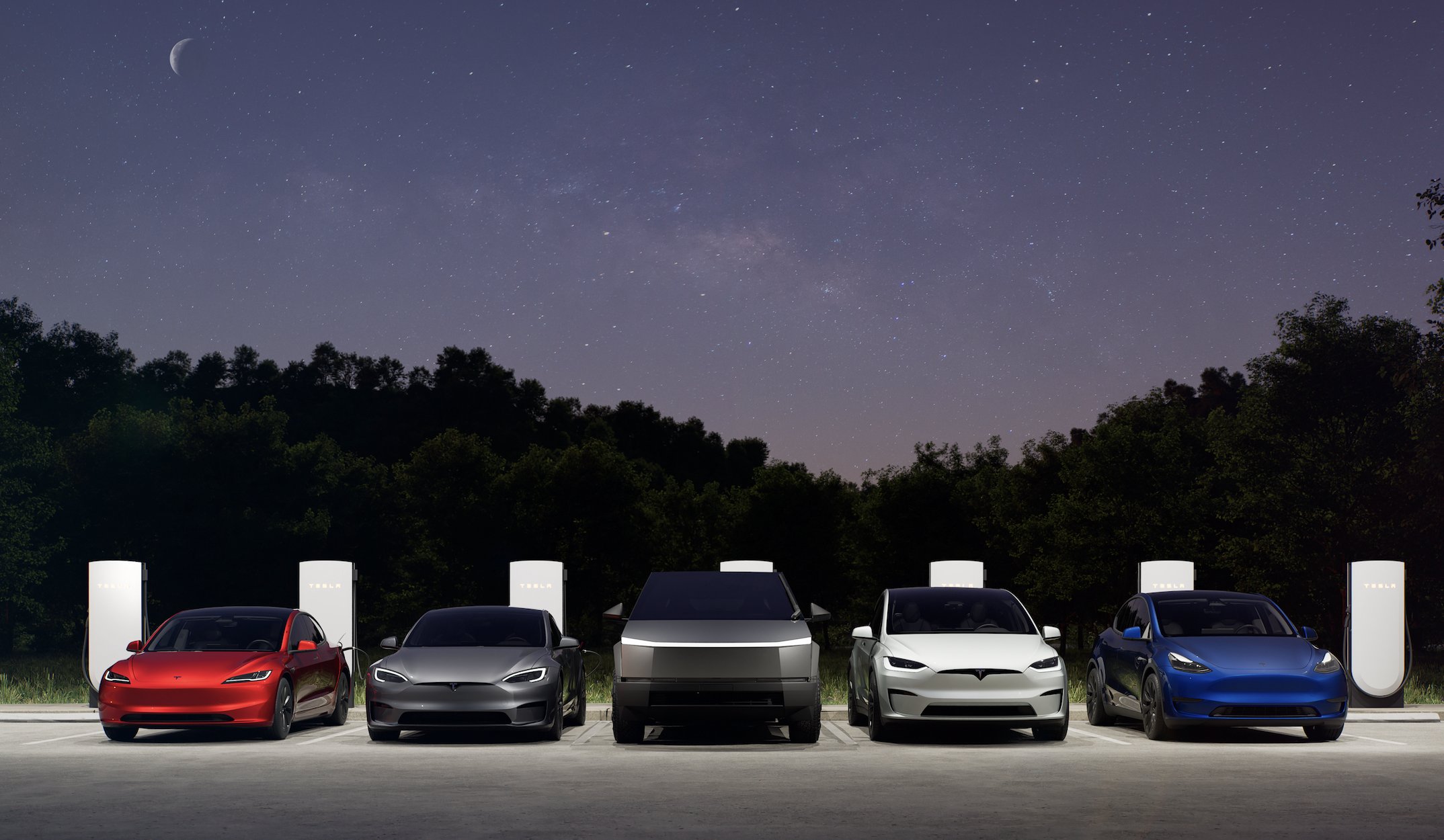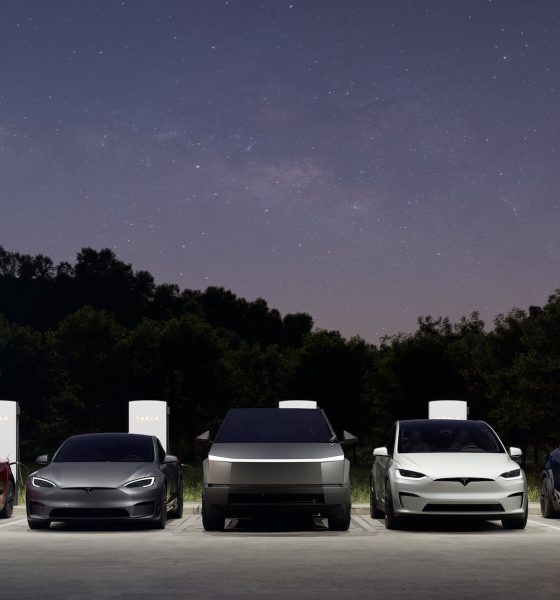A quick look at the electric vehicle community’s sentiments about Elon Musk on X and platforms like Reddit would suggest that the CEO’s increasing political nature has now become Tesla’s largest liability. Yet as per S&P Mobility, Tesla’s brand loyalty is still incredibly strong. This suggests that even in today’s social media-driven landscape, good products still drive sales and loyalty.
Tesla’s resilient brand loyalty
In its post, S&P Mobility noted that among individual brands, “Tesla continues its run as the leader in brand loyalty with a rate of 67.8% for the first half of 2024.” Vince Palomarez, associate director of loyalty product management at S&P Global Mobility, also noted that Tesla’s customer loyalty has remained constant.
“Tesla has historically been a brand with strong loyal ties among their consumer base, despite a limited product portfolio. Changes in BEV prioritization among other OEMs, along with Tesla’s directive to cut pricing when needed, has kept households from defecting,” Palomarez noted.
S&P Mobility’s findings are extremely interesting as social media trends and media reports have practically been unanimous about the idea that Elon Musk has become poison to Tesla’s brand. As per Palomarez, however, the data does not support this narrative–at least for now.
“We can only report on what we see in the data. In this instance, there is some decline in Tesla’s loyalty for the first half of 2024 vs. 2023; however, it is below one percentage point,” he said, noting that Tesla is still clearly beating other brands. “The brand still remains the industry leader in brand loyalty by a healthy margin. For comparison’s sake, the industry brand loyalty average stands at 52.5% for H1 2024 and no other brand has a loyalty rate above 60%,” the S&P Global Mobility associate director noted.
Good products drive sales and loyalty
Perhaps one of the reasons why Tesla still sees strong brand loyalty among consumers is the fact that the company produces good products, from its electric vehicles to its battery storage systems. Even if Tesla’s vehicles have been beaten by other competitors when it comes to range, efficiency, and 0-60 mph times, the company’s vehicles offer the best value for their price.
A good example of this is the re-engineered Tesla Model 3 Performance, which is an absolute steal at $55,000 for the performance, tech, safety, comfort, and features that it offers. The same is true for the Tesla Model Y, which has effectively outsold its rivals in the all-electric crossover SUV segment despite having the same exterior design since its March 2019 unveiling event.
Consumers gravitate towards good products, leadership be damned. A look at the strong sales in the United States of the Volkswagen Beetle Type 1, a vehicle whose creation was driven by Adolf Hitler’s desire for a people’s car, proves this. The Volkswagen Beetle Type 1 became extremely popular in the United States in the 1960s, less than two decades after World War 2. All in all, almost 5 million Beetle Type 1 units were sold in the United States out of a total of 21.5 million cars worldwide. Part of the reason behind the Beetle Type 1’s success in the U.S. is due to the fact that it is just a great, bang-for-the-buck car.
The list goes on. Ford’s founder, Henry Ford, held deeply antisemitic views. He even brought a local newspaper to publish his own anti-Semitic writings. Ford has thrived despite its founder’s questionable ethics, and the company still produces the best-selling car in the United States today–the F-Series pickup trucks. The 47-year reign of the F-Series as America’s best-selling vehicle could be attributed to the fact that they are just great trucks.
Most amusing is the Reimann family, which owns a controlling stake in JAB Holdings. In 2019, it was revealed that the Reimann family had close ties to the Nazi party. Despite this, one cannot deny the fact that JAB Holdings’ brands, which include Krispy Kreme, Jimmy Choo, and Pret-A-Manger, are still loved by consumers because of their quality and consumer appeal.
Elon Musk’s tweets
There is no doubt that since acquiring Twitter, Elon Musk has become far more willing to share his views on a number of issues, from US and international politics to gender ideology. There is also no doubt that the negative slant in media against Musk and his companies is at an all-time high. The Guardian, just last week, published a guide on how to “rein in” Elon Musk by boycotting Tesla, having foreign governments threaten to arrest Musk, suing the CEO under Section Five of the FTC Act, and terminating contracts with SpaceX.
Musk has always attracted negative media attention, but not at this level.
Considering the nature of Musk’s posts, it is no surprise that some consumers would indeed not purchase Teslas due to the CEO’s social media posts. But ultimately, sales and brand loyalty are a game of numbers. There is a vocal portion of the car-buying community who are extremely open about not purchasing Teslas due to their dislike or hatred of Musk. However, the lines between the EV sector and the greater automotive market are growing thinner. Thus, more regular car buyers may simply be looking at Teslas because they need a car. For such consumers, the politics of Tesla’s CEO may not be a consideration at all.
Don’t hesitate to contact us with news tips. Just send a message to simon@teslarati.com to give us a heads up.

News
Elon Musk’s Grokipedia surges to 5.6M articles, almost 79% of English Wikipedia
The explosive growth marks a major milestone for the AI-powered online encyclopedia, which was launched by Elon Musk’s xAI just months ago.

Elon Musk’s Grokipedia has grown to an impressive 5,615,201 articles as of today, closing in on 79% of the English Wikipedia’s current total of 7,119,376 articles.
The explosive growth marks a major milestone for the AI-powered online encyclopedia, which was launched by Elon Musk’s xAI just months ago. Needless to say, it would only be a matter of time before Grokipedia exceeds English Wikipedia in sheer volume.
Grokipedia’s rapid growth
xAI’s vision for Grokipedia emphasizes neutrality, while Grok’s reasoning capabilities allow for fast drafting and fact-checking. When Elon Musk announced the initiative in late September 2025, he noted that Grokipedia would be an improvement to Wikipedia because it would be designed to avoid bias.
At the time, Musk noted that Grokipedia “is a necessary step towards the xAI goal of understanding the Universe.”
Grokipedia was launched in late October, and while xAI was careful to list it only as Version 0.1 at the time, the online encyclopedia immediately earned praise. Wikipedia co-founder Larry Sanger highlighted the project’s innovative approach, noting how it leverages AI to fill knowledge gaps and enable rapid updates. Netizens also observed how Grokipedia tends to present articles in a more objective manner compared to Wikipedia, which is edited by humans.
Elon Musk’s ambitious plans
With 5,615,201 total articles, Grokipedia has now grown to almost 79% of English Wikipedia’s article base. This is incredibly quick, though Grokipedia remains text-only for now. xAI, for its part, has now updated the online encyclopedia’s iteration to v0.2.
Elon Musk has shared bold ideas for Grokipedia, including sending a record of the entire knowledge base to space as part of xAI’s mission to preserve and expand human understanding. At some point, Musk stated that Grokipedia will be renamed to Encyclopedia Galactica, and it will be sent to the cosmos.
“When Grokipedia is good enough (long way to go), we will change the name to Encyclopedia Galactica. It will be an open source distillation of all knowledge, including audio, images and video. Join xAI to help build the sci-fi version of the Library of Alexandria!” Musk wrote, adding in a later post that “Copies will be etched in stone and sent to the Moon, Mars and beyond. This time, it will not be lost.”
News
Tesla Model 3 becomes Netherlands’ best-selling used EV in 2025
More than one in ten second-hand electric cars sold in the country last year was a Tesla Model 3.

The Tesla Model 3 became the most popular used electric car in the Netherlands in 2025, cementing its dominance well beyond the country’s new-car market.
After years at the top of Dutch EV sales charts, the Model 3 now leads the country’s second-hand EV market by a wide margin, as record used-car purchases pushed electric vehicles further into the mainstream.
Model 3 takes a commanding lead
The Netherlands recorded more than 2.1 million used car sales last year, the highest level on record. Of those, roughly 4.8%, or about 102,000 vehicles, were electric. Within that growing segment, the Tesla Model 3 stood far ahead of its competitors.
In 2025 alone, 11,338 used Model 3s changed hands, giving the car an 11.1% share of the country’s entire used EV market. That means more than one in ten second-hand electric cars sold in the country last year was a Tesla Model 3, Auto Week Netherlands reported. The scale of its lead is striking: the gap between the Model 3 and the second-place finisher, the Volkswagen ID3, is more than 6,700 vehicles.
Rivals trail as residual values shape rankings
The Volkswagen ID.3 ranked a distant second, with 4,595 used units sold and a 4.5% market share. Close behind was the Audi e-tron, which placed third with 4,236 registrations. As noted by Auto Week Netherlands, relatively low residual values likely boosted the e-tron’s appeal in the used market, despite its higher original price.
Other strong performers included the Kia Niro, the Tesla Model Y, and the Hyundai Kona, highlighting continued demand for compact and midsize electric vehicles with proven range and reliability. No other model, however, came close to matching the Model 3’s scale or market presence.
News
Tesla Model Y Standard Long Range RWD launches in Europe
The update was announced by Tesla Europe & Middle East in a post on its official social media account on X.

Tesla has expanded the Model Y lineup in Europe with the introduction of the Standard Long Range RWD variant, which offers an impressive 657 km of WLTP range.
The update was announced by Tesla Europe & Middle East in a post on its official social media account on X.
Model Y Standard Long Range RWD Details
Tesla Europe & Middle East highlighted some of the Model Y Standard Long Range RWD’s most notable specs, from its 657 km of WLTP range to its 2,118 liters of cargo volume. More importantly, Tesla also noted that the newly released variant only consumes 12.7 kWh per 100 km, making it the most efficient Model Y to date.
The Model Y Standard provides a lower entry point for consumers who wish to enter the Tesla ecosystem at the lowest possible price. While the Model 3 Standard is still more affordable, some consumers might prefer the Model Y Standard due to its larger size and crossover form factor. The fact that the Model Y Standard is equipped with Tesla’s AI4 computer also makes it ready for FSD’s eventual rollout to the region.
Top Gear’s Model Y Standard review
Top Gear‘s recent review of the Tesla Model Y Standard highlighted some of the vehicle’s most notable features, such as its impressive real-world range, stellar infotainment system, and spacious interior. As per the publication, the Model Y Standard still retains a lot of what makes Tesla’s vehicles well-rounded, even if it’s been equipped with a simplified interior.
Top Gear compared the Model Y Standard to its rivals in the same segment. “The introduction of the Standard trim brings the Model Y in line with the entry price of most of its closest competition. In fact, it’s actually cheaper than a Peugeot e-3008 and costs £5k less than an entry-level Audi Q4 e-tron. It also makes the Ford Mustang Mach-E look a little short with its higher entry price and worse range,” the publication wrote.










